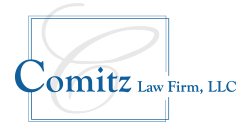 “It takes a wise doctor to know when not to prescribe, and at times the greater skill consists in not applying remedies.” So proclaimed Spanish philosopher Baltasar Gracián. Four centuries later, Gracián would have been taken aback by the overprescribing taking place in the United States.
“It takes a wise doctor to know when not to prescribe, and at times the greater skill consists in not applying remedies.” So proclaimed Spanish philosopher Baltasar Gracián. Four centuries later, Gracián would have been taken aback by the overprescribing taking place in the United States.
Overprescribing is defined as “providing more drugs than are necessary or in dosages that are excessive for the desired therapeutic benefit for which they are prescribed”. Older Americans are particularly vulnerable to medication overload as it can contribute to polypharmacy – the use of multiple drugs by a single patient to treat one or more conditions. Polypharmacy is most common among elderly patients, ages 65 and over. More than four in ten older adults take five or more prescription medications a day, tripling over the past two decades. Nearly twenty percent take ten drugs or more.
More medications can create potentially dangerous drug interactions. They can also trigger a “prescribing cascade”. This increasingly common problem occurs when a drug administered to a patient causes adverse event signs and symptoms that are misinterpreted as a new condition, resulting in a new medication being prescribed.
Conditions caused by polypharmacy can include:
- dizziness
- falls
- confusion
- weakness
- tremors
- anxiety
- depression
- loss of appetite
It is estimated that polypharmacy causes 100,000 deaths per year.
In addition to the threat it poses, overprescribing contributes to a public health crisis as well as the opioid epidemic.
Commonly Overprescribed Medications
Categories of medications which are commonly overprescribed include, among others:
Antibiotics
At least thirty percent of antibiotics prescribed in the United States are unnecessary, according to the Centers for Disease Control and Prevention (CDC). CDC estimates that about 47 million antibiotic courses are prescribed for infections that don’t need antibiotics. The sheer volume of unnecessary antibiotics accelerates antibiotic resistance, which the CDC calls “one of the greatest public health challenges of our time”. Other risks of antibiotic overuse or overprescribing include, among other things, increases in disease severity, disease length, health complications, and need for medical treatment of health problems that previously may have resolved on their own.
Benzodiazapines
This class of drugs, which includes Valium, Xanax, Klonopin, and Ativan, shares some of the same characteristics of opioids. Over a twelve-year period, prescriptions for benzodiazapines (benzos) nearly doubled. Benzodiazepine drugs are prescribed at about 66 million doctors’ appointments. This means that for every 100 adults that visit an office-based doctor over the course of a year, 27 visits will result in a prescription for a benzodiazepine. One in four older adults prescribed a benzodiazepine goes on to risky long-term use.
Opioids
Using opioids to treat chronic pain represents the most concerning case of overprescribing. They can be useful for the short-term treatment of pain. However, within weeks of use, tolerance increasingly develops to the pain reduction effects of these drugs. As a result, when these drugs are administered at a stable dose over time, they become at best marginally effective. Increasing the dose and the duration of use creates a heightened risk of dependence and for some, addiction that can lead to death. Common prescriptions opioids include hydrocodone, oxycodone, morphine codeine and fentanyl.
Stimulants
Because of the overdiagnosis of ADHD in children, stimulants such as Ritalin and Adderall are over-prescribed. The United States accounts for less than 5% of the world’s population but 83.1% of the global volume of ADHD medications in circulation.
The “rush” accompanying the use of stimulants makes them one of the most abused prescription drugs among young people. At high doses, prescription stimulants can lead to a dangerously high body temperature, an irregular heartbeat, heart failure, and seizures.
Prescriber’s Legal Liability
 Overprescribing may give rise to a medical malpractice lawsuit. Medical malpractice is defined as any act or omission by a physician during treatment of a patient that deviates from accepted norms of practice in the medical community and causes an injury to the patient.
Overprescribing may give rise to a medical malpractice lawsuit. Medical malpractice is defined as any act or omission by a physician during treatment of a patient that deviates from accepted norms of practice in the medical community and causes an injury to the patient.
In order to prevail in a lawsuit, a plaintiff must prove four elements:
Duty – The defendant owed a legal duty to the plaintiff.
Breach – The defendant breached that duty by acting or failing to act in a certain way.
Causation – It was the defendant’s actions (or inaction) that actually caused the plaintiff’s injury.
Damages – The plaintiff was harmed or injured as a result of the defendant’s actions.
Opioid addiction lawsuits
Doctors have increasingly been held accountable for opioid abuse through civil lawsuits. Under most circumstances, overprescribing opioids is a form of medical malpractice.
If you believe that you or a loved one suffered an injury as a result of medical malpractice, call Comitz Law at 570-829-1111 or email info@comitzlaw.com.


